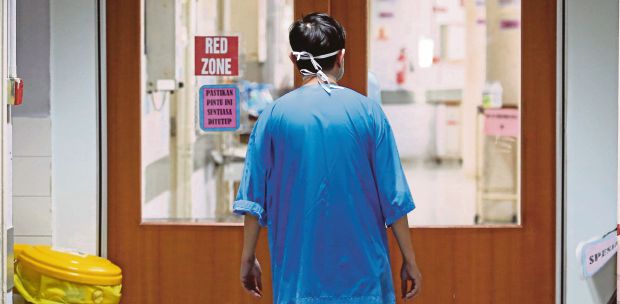Malaysia is in need of medical officers. Anecdotal evidence of long queues at public hospitals points to this.
But there is a better indicator: recruitment. Between 2019 and last year, the Health Ministry recruited 9,822 of them and plans to take in 6,000 more this year and the next. But as the inflow increases, so does the outflow.
Something is amiss and the ministry must fix it before mere bleeding becomes a haemorrhage. We suggest it start with contract medical officers.
Malaysian medical officers on contract are one unhappy lot, if last year's survey conducted by CodeBlue, an organisation that advocates healthcare in the country, is any guide.
Of the complaints, "overworked" and "underpaid" are two words that make frequent appearances. There is also the issue of transition from being on contract to a permanent position. Transparency in the selection process needs much work.
These and other issues led many medical officers on contract to go on strike three years ago, arguably the first in the country.
They must have reached a breaking point to ignore their Hippocratic oath. Since then, the ministry has introduced a few measures to tackle the contract doctors' problems, but these are "too little, too late" as one medical officer told this newspaper on Sunday.
Perhaps there is something inherently wrong with the idea of placing someone as young as medical officers on contract.
Doctors, just like others in the public service, want a career. Contracts don't offer that. This may be the reason why, in the past at least, vacancies went unanswered for days.
Putting medical officers on contract isn't the only issue. Maldistribution of medical workforce, as Dr Musa Mohd Nordin, wrote in his letter-to-the-editor on Jan 24 to the New Straits Times, is an even bigger problem.
The ideal ratio for doctors to the population is one for every 400 people, says the World Health Organisation. In 2021, the latest figure published by the ministry in its "Health Facts 2022", Malaysia's ratio was 1:420, meaning there were 2.4 doctors for every 1,000 people. Just 20 short of the ideal.
So, it is the uneven distribution of doctors, as pointed out by Dr Musa, which is the problem. To him, the Klang Valley has more than it requires while rural areas and Sabah and Sarawak are starved of theirs.
This view is supported by the ministry's "2015-2018 Human Resources For Health Country Profile", though the numbers may be somewhat dated.
While we may think that we have 2.4 doctors for every 1,000 of us, the national and regional distribution of doctors was way less. The national average was 1.9, with the west coast recording 2.1 and east coast registering 1.5. Sarawak equalled the ratio of the east coast, but Sabah posted a dismal 1.2.
The ministry may have some constraints in increasing the number of its healthcare workers, especially doctors. But it can do better with what it has. Equitable and just distribution is the best way for the ministry to achieve optimal utilisation of what it has.
Klang Valley isn't the only area where the healthcare needs of Malaysians must be served. Rural areas in the peninsula, Sabah and Sarawak, too, have healthcare needs.





